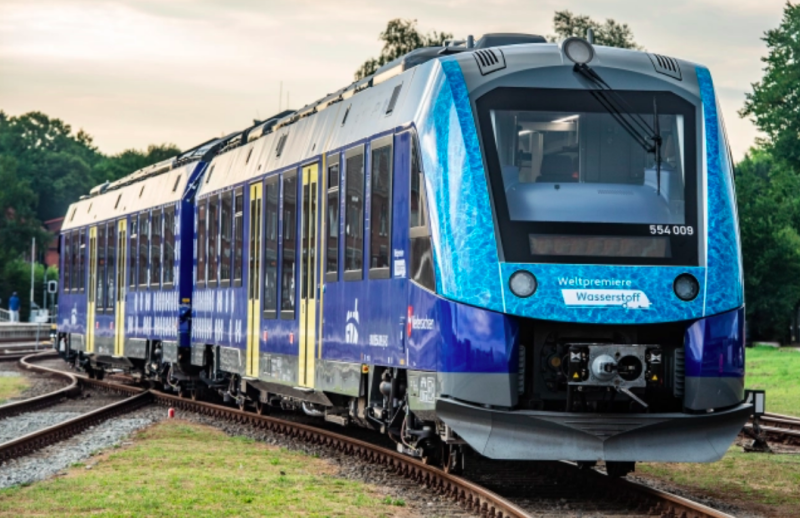For the record, and this might be interesting for those who are in love with exactness of data, the Coradia iLint is the world’s first passenger train that is powered by a hydrogen fuel cell.
It’s always good to establish facts the way it is to celebrate some. And where it comes to the latter, then perhaps Germany might be in for some celebration despite growing concerns over that part of Europe that’s made headlines about fighting wars and not knowing where to stop.
In a country where Helmut Marko is a hero, Merkel no less important than the power and reliability of German engineering and where technology is as dominant a narrative as is the Brandenburg-based Gigafactory, it’s fascinating that a hydrogen-powered train fleet is making news.
And why shouldn’t that be the case?
For after all, Germany just debuted its first-ever hydrogen-powered train fleet, which is powered by French industrial giant Alstom.
Having said that, what’s rather interesting to note is that there’s a common link between the Cordia iLint as well as Germany’s hydrogen-powered train fleet that includes no fewer than fourteen trains.
It’s the link that clearly tells the closeness Germany shares with France and that even in this part of the 21st century, where Scandinavian prowess no longer takes precedence to whatever else is happening in Europe, the two Western Europe powers are still going strong.
That link is France. How’s that? Easy peasy!
Alstom has provided the fleet of trains that Germany has inaugurated just a few hours ago.
The Saint Ouen-headquartered French giant has since its inception, circa 1928, been responsible for some of the most reputed rolling stocks and the contribution to Germany is in a long list of sterling creations of the multinational.
The following is what Alstom CEO Henri Poupart-Lafarge shared on the momentous occasion, “We are very proud to put this technology into operation together with our strong partners as a world premiere.”
That being said, the northern state of Lower Saxony is at the epicentre of the latest French offering to Germany in that it where the fourteen trains are stationed.
They are stationed on a 100 kilometre track path that connects several cities including- Cuxhaven, Bremerhaven, Buxtehude (close to Hamburg) and Bremervoerde.
On a positive note, the German state bordering North-Rhine Westphalia to the west and Saxony Anhalt to the east has replaced all of its diesel locomotives.
In an age where climate change is no longer a red alert but perhaps so utterly concerning a narrative, if that’s not a feat in itself, then what is?
For Germany the country, the economy as well as the conscience that understands it must lead by an example, this piece of news is no less emphatic than a civilian earning the cross of the Order of the Merit. How’s that?
Perhaps few things could be as helpful in a bid to decarbonise the rail sector, among the biggest challenges of Germany as you read this piece than the Alstom-delivered train fleets?
This zero emission mode of transport, the hydrogen-powered train fleet functions by mixing hydrogen that is on board with the oxygen already available.


